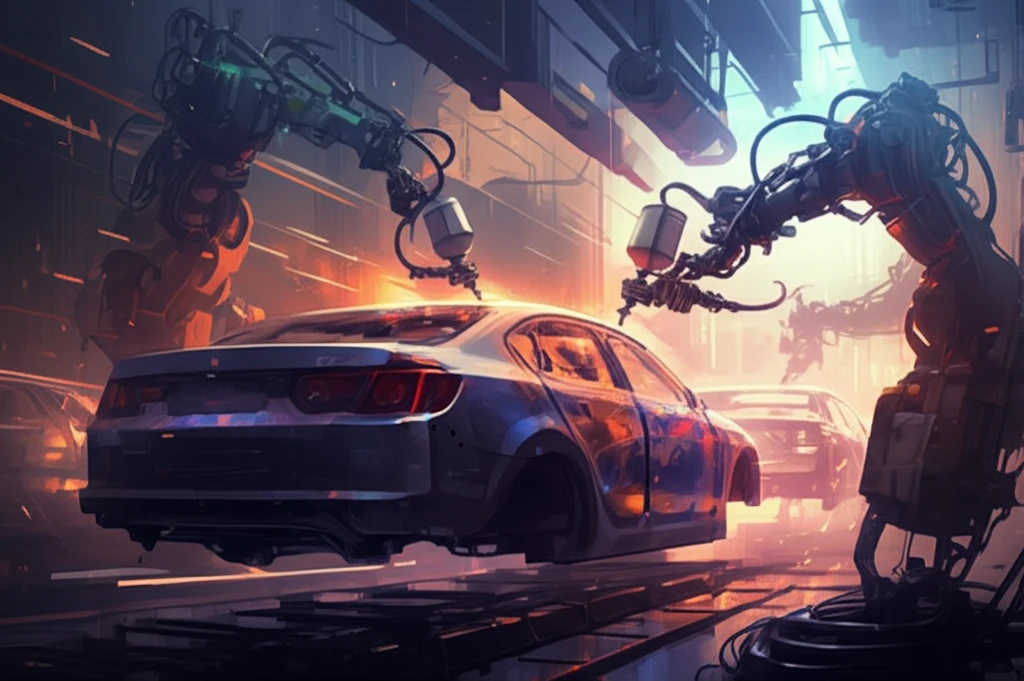
The Future of Car Manufacturing: How Robots are Revolutionizing Adhesive Spray Painting
"Discover how advancements in robotic adhesive spraying are transforming the automotive industry, improving precision, and boosting efficiency in car production."
The automotive industry is constantly evolving, with manufacturers seeking innovative ways to improve efficiency, reduce costs, and enhance the quality of their products. One area experiencing significant transformation is the application of adhesives in car assembly. Traditionally a manual process, adhesive spray painting is now being revolutionized by robotics.
Robotic spray painting offers numerous advantages over manual methods, including increased precision, reduced material waste, and improved consistency. These benefits not only lead to higher-quality vehicles but also contribute to a more sustainable manufacturing process. As technology advances, robots are becoming increasingly sophisticated, capable of handling complex tasks with minimal human intervention.
This article delves into the world of robotic adhesive spray painting, exploring its applications, benefits, and the key parameters that ensure optimal performance. We'll examine how robots like the ABB IRB 1600 are used in conjunction with advanced spray equipment to create a more efficient and precise car manufacturing process.
Why Automate Adhesive Spray Painting with Robots?

Automating adhesive spray painting offers compelling advantages:
- Increased Precision: Robots apply adhesives with pinpoint accuracy, minimizing waste and ensuring optimal bonding.
- Reduced Material Waste: Precise application reduces overspray and wasted adhesive, saving costs and minimizing environmental impact.
- Improved Consistency: Automated processes eliminate inconsistencies associated with manual application, ensuring uniform quality across all products.
- Enhanced Efficiency: Robots can work continuously without fatigue, significantly speeding up the production process.
- Safer Working Conditions: Automating adhesive spraying reduces worker exposure to potentially harmful chemicals.
The Road Ahead: Embracing Robotic Automation
Robotic adhesive spray painting represents a significant advancement in automotive manufacturing. By embracing this technology, manufacturers can achieve greater precision, efficiency, and sustainability. As robots become more sophisticated and versatile, their role in car production will undoubtedly continue to expand, shaping the future of the industry.
